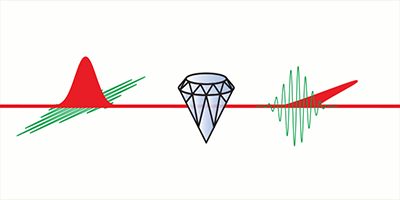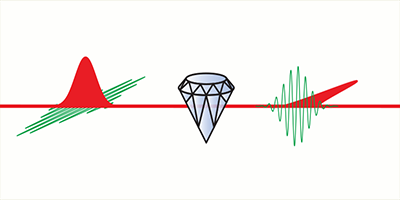Quantum Diamond Shines On
Diamond is already a popular host material for quantum bits. Two groups have now demonstrated new ways to use diamond to build other essential elements in a quantum architecture: quantum memories and quantum repeaters. Benjamin Sussman and co-workers at the National Research Council of Canada and the Institute for Quantum Computing in Waterloo, Canada, have shown that single photons can be stored in, and retrieved from, vibrations in a diamond lattice—realizing a memory that works at room temperature and higher speed than existing schemes. And Hideo Kosaka and Naeko Niikura at the Yokohama National University, Japan, have shown that a photon can be entangled with the internal spin state of a nitrogen-vacancy defect in diamond. Their scheme could serve as a quantum repeater, a device that faithfully transfers entanglement between an incoming and an outgoing photon.
Sussman and colleagues exploit the coupling of laser light with the internal vibrations, or phonons, of diamond. Using laser sources that emit single photons, they are able to excite (“write”) and probe (“read”) such phonons. The use of phonons has two important advantages compared to other methods that are based on resonant excitation of electrons: light can be stored and retrieved at terahertz rates, and without cryogenic cooling. However, the short memory lifetime (3.5 picoseconds) will make this approach most suitable for fast computing operations, rather than long-distance communication. The scheme realized by the Yokohama group could instead offer much longer storage for quantum repeater applications: thanks to the coupling between photons and the internal states of the nitrogen vacancy, photons absorbed by the defect can generate entangled spin states. The entangled spins maintain their coherence for seconds and could be made to re-emit entangled photons for further processing.
This research is published in Physical Review Letters.
–Matteo Rini





